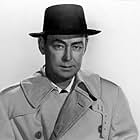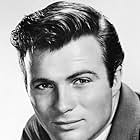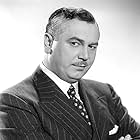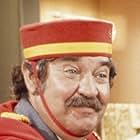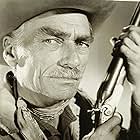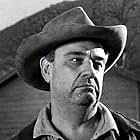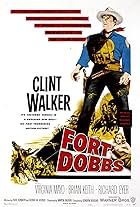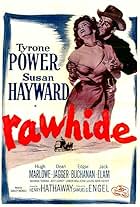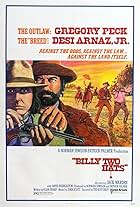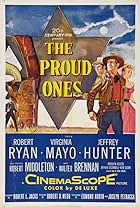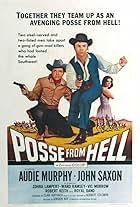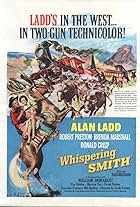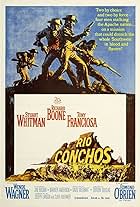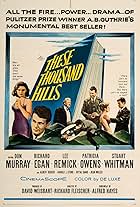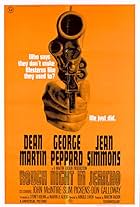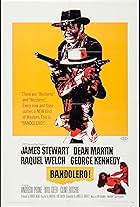In this Western, Alan Ladd exacts revenge on a small town the best way he knows how -- by becoming sheriff.In this Western, Alan Ladd exacts revenge on a small town the best way he knows how -- by becoming sheriff.In this Western, Alan Ladd exacts revenge on a small town the best way he knows how -- by becoming sheriff.
Photos
Stanley Adams
- Pete
- (uncredited)
Robert Adler
- Sim
- (uncredited)
Fred Aldrich
- Barfly
- (uncredited)
Emile Avery
- Townsman
- (uncredited)
Walter Bacon
- Barfly
- (uncredited)
Eumenio Blanco
- Townsman
- (uncredited)
Oscar Blank
- Barfly
- (uncredited)
Nick Borgani
- Cantina Barfly
- (uncredited)
Bill Borzage
- Cantina Barfly
- (uncredited)
- Director
- Writers
- All cast & crew
- Production, box office & more at IMDbPro
Storyline
Did you know
- TriviaDan talks about using a crayon to draw on walls; crayons weren't invented until1903.
- GoofsWomen did wear pants in this era out of necessity, but these pants were not anything like those worn by Julie Reynolds Dolores Michaels. The pants would not have tailored to be form fitting and probably would have been denim blue or brown. Similarly her shirts would not have been form fitting.
- Quotes
Dr. Seltzer: All the way from Atlanta, she said. They were burned out in the war. The two of them - shoulda been three - wanted to start a new life. They came all the way west... here... to us, my hospitable friends. That's a long way to come just to lay down and die.
- ConnectionsFeatured in Best in Action: 1960 (2018)
- SoundtracksLittle Brown Jug
Written by Joseph Winner
Played on a harmonica in town when Mitch and Julie return; also heard in the Royce City Saloon
Featured review
What ostensibly starts as a formula Western of a man who encounters tragedy on the frontier and rises above it quickly takes a darker turn in this noirish 1960 MGM release. Alan Ladd is an ex-Confederate who encounters a rude reception from townspeople when arriving in the middle of the night with a sickly pregnant wife; delays in getting a bottle of inexpensive medicine to her result in her death. The local merchants are remorseful and try to bring Ladd into the community by making him a lawman, but he instead embarks on a sociopath's trail of revenge.
By sad coincidence the role of a nihilistic man who has seen his world destroyed and is now fully detached from moral constraint is well suited to Ladd in the last few years of life; childhood trauma, alcoholism, and a suicide attempt indicate a life which demanded heavy tolls for whatever success he achieved. Made in an era partial to sunnier Westerns, the Peyton Place-atmosphere of OFIH stands out in stark contrast. The cold-blooded killing of a lawman, back-shooting betrayal. And a lethal gunfight played out solely for betting are all present in a script that seems more appropriate to a 1970's Clint Eastwood outing. Black and white filming would have added a special patina to the story.
This being the twilight of the 1950's, studio pressures might have compelled writer Aaron Spelling (yes, he of 1980's prime time soap fluff!) to shift some emphasis to the more redeemable characters played by Dolores Michaels and Barry Coe. And just for a moment, I wondered if Michaels might have been Lauren Bacall appearing under a stage name.
Western watchers might pay special attention to the covered buckboard that appears throughout; the canvas appears to have transparent plastic windows, and the late 1860's is much too early for that.
By sad coincidence the role of a nihilistic man who has seen his world destroyed and is now fully detached from moral constraint is well suited to Ladd in the last few years of life; childhood trauma, alcoholism, and a suicide attempt indicate a life which demanded heavy tolls for whatever success he achieved. Made in an era partial to sunnier Westerns, the Peyton Place-atmosphere of OFIH stands out in stark contrast. The cold-blooded killing of a lawman, back-shooting betrayal. And a lethal gunfight played out solely for betting are all present in a script that seems more appropriate to a 1970's Clint Eastwood outing. Black and white filming would have added a special patina to the story.
This being the twilight of the 1950's, studio pressures might have compelled writer Aaron Spelling (yes, he of 1980's prime time soap fluff!) to shift some emphasis to the more redeemable characters played by Dolores Michaels and Barry Coe. And just for a moment, I wondered if Michaels might have been Lauren Bacall appearing under a stage name.
Western watchers might pay special attention to the covered buckboard that appears throughout; the canvas appears to have transparent plastic windows, and the late 1860's is much too early for that.
- militarymuseu-88399
- Oct 6, 2022
- Permalink
- How long is One Foot in Hell?Powered by Alexa
Details
Box office
- Budget
- $1,090,000 (estimated)
- Runtime1 hour 30 minutes
- Color
- Aspect ratio
- 2.35 : 1
Contribute to this page
Suggest an edit or add missing content






